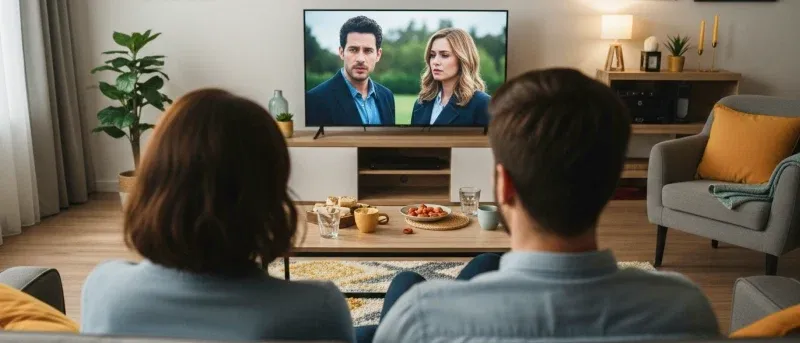How does fiber internet improve video streaming quality?
Discover how faster speeds, lower latency, and higher bandwidth transform your streaming experience
Whether it’s catching up on the latest TV shows, attending virtual meetings, or streaming live events, video streaming is a common activity in everyday life. But nothing ruins the experience faster than constant buffering, lag, or grainy resolution. If you’ve ever found yourself frustrated with your video quality, your internet connection may be the culprit. Fortunately, fiber internet is changing the game.
But how exactly does fiber internet improve video streaming quality, and what makes it one of the best types of internet for streaming? Let’s break it down.
What is fiber internet?
Fiber internet is a broadband connection that uses fiber-optic cables to transmit data as light signals. Unlike traditional DSL or cable connections, fiber can carry significantly more data at much faster speeds and over longer distances without signal loss.
Providers like Brightspeed Internet Fiber are expanding access to this powerful technology, making it more widely available to homes and businesses across the country.
Why video streaming needs a strong connection
Streaming video relies on a continuous download of data to maintain a smooth and clear picture. When your internet connection for streaming is slow or unstable, the video will pause to buffer, downgrade in resolution, or freeze altogether.
Streaming platforms like Netflix, YouTube, and Disney+ recommend different speeds based on video quality:
- 3–5 Mbps for standard definition (SD)
- 5–10 Mbps for high definition (HD)
- 25+ Mbps for 4K ultra-HD
These numbers are per stream, so if multiple people in your household are streaming or using the internet simultaneously, you’ll need more bandwidth.
How fiber improves streaming quality
1. Faster speeds
Fiber internet offers symmetrical upload and download speeds, often up to 1 Gig or higher (Brightspeed provides fiber speeds up to 2 Gig!). That means videos load instantly and play smoothly—even in 4K. No more waiting for content to buffer or starting your movie only to watch a spinning wheel for five minutes.
With Brightspeed Internet Fiber, for example, customers enjoy super-fast speeds that support even the most demanding streaming environments. It’s the ideal setup for a household full of movie lovers, gamers, or remote workers.
2. Higher bandwidth
Fiber has significantly more bandwidth than other types of connections, allowing multiple users to stream, game, and work online simultaneously without slowing each other down. Whether you’re streaming on your smart TV, phone, or tablet, a fiber stream delivers smooth playback even during peak usage hours.
This makes fiber internet especially beneficial for larger households, content creators, or anyone who hosts frequent Zoom calls or streams live events in HD.
3. Lower latency
Latency is the time it takes for data to travel from the source to your screen. Lower latency means less delay, which is crucial for live streaming, video conferencing, and online gaming.
Fiber’s ultra-low latency ensures that live streams don’t lag and video calls feel more natural. Your favorite content reaches you almost in real time—without awkward delays or missed moments.
4. Reliable connections
Unlike copper cable connections, which degrade over distance or in adverse weather conditions, fiber-optic lines are more durable and resistant to interference. That means a more stable and consistent internet connection for streaming, with fewer outages or service interruptions.
With Brightspeed Internet Fiber, users benefit from a reliable network backbone designed to deliver uninterrupted service—even during high-traffic periods.
Fiber vs other internet types for streaming
Let’s compare fiber internet to some common alternatives:
- Cable internet: While cable can offer decent speeds, it often suffers from congestion, especially in neighborhoods where many homes share the same line. This can lead to buffering and slowdowns during peak hours.
- DSL: DSL is slower and more outdated, with speeds often under 50 Mbps. It’s typically not ideal for HD or 4K streaming on multiple devices.
- 5G/Fixed Wireless: Wireless technologies are continually improving, but users may still experience signal loss due to weather, obstructions, or network overload.
In comparison, fiber stream quality remains consistent regardless of external factors, making it the best internet for streaming video in terms of both performance and reliability.
Is fiber internet worth it for streaming?
If you regularly stream in HD or 4K, live stream to social media, or rely on crystal-clear video calls, then yes—fiber internet is absolutely worth it. It’s not just about speed; it’s about stability, quality, and the ability to future-proof your digital life.
Providers like Brightspeed Internet Fiber are investing in next-gen infrastructure to ensure that customers can enjoy smooth, high-quality streaming for years to come.
